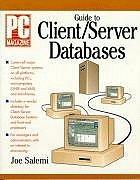Question
Let . Here, contains all columns of 0s and 1s of height two. A string of symbols in gives two rows of 0s and 1s.
Let  . Here,
. Here,  contains all columns of 0s and 1s of height two. A string of symbols in
contains all columns of 0s and 1s of height two. A string of symbols in  gives two rows of 0s and 1s. Consider each row to be a binary number and let
gives two rows of 0s and 1s. Consider each row to be a binary number and let 
There is an answer of this question on chegg in "Textbook Solutions" but i have a few questions about it and am wondering if someone could clear them up.
I get pretty lost in the steps below "Scan the input in reverse order".
-What tells us that we are suppose to shift bits and apply the adding-the-multiplicand trick? In other words, what indicates that this is the method you should use over a different one?
-Next, I'm not sure what the equations are saying in the steps after "The logical equations describing exactly how they are related as follows:". I'm confused about how they get there from the steps described above it.
-Lastly, can you explain what the transition function is doing in the state diagram? I can't seem to figure out how they are getting from one to the other.
If anyone who understands the answer thats already posted to chegg and can explain it a bit clearer, that would be amazing.
Step by Step Solution
There are 3 Steps involved in it
Step: 1

Get Instant Access to Expert-Tailored Solutions
See step-by-step solutions with expert insights and AI powered tools for academic success
Step: 2

Step: 3

Ace Your Homework with AI
Get the answers you need in no time with our AI-driven, step-by-step assistance
Get Started


